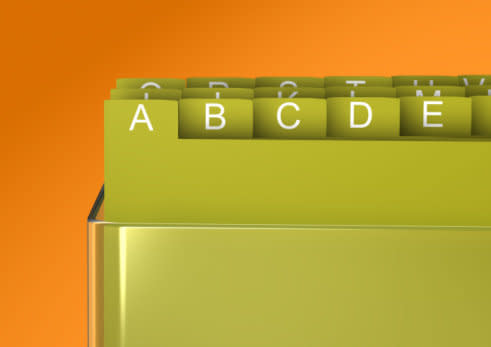Owe Taxes This Year? Here Are Your Options.
There are nearly two months left before tax day, and it looks as if fewer filers will receive a refund this year.
About 30 million Americans will owe the IRS money for 2018 — 3 million more than before the Republicans’ Tax Cuts and Jobs Act went into effect. Many of those who already filed their taxes and were hit with a bill were shocked. Maybe that includes you.
So why do you suddenly owe taxes? And what can you do if you can’t afford the bill? Here’s what you need to know.
Why Do I Owe Taxes?
Finding out you owe taxes when you thought you were going to get a refund is definitely disappointing. And if you were counting on that refund to pay off debt or catch up on bills, owing can create an even bigger financial headache. But it’s important to understand that just because you owe more this April doesn’t necessarily mean you paid more taxes in 2018.
The new tax law made major changes to tax brackets, reducing tax rates for almost every income level and filing status, said Logan Allec, a certified public accountant and creator of the savings website Money Done Right.
“After this new tax law was passed, the IRS and Treasury Department promptly adjusted the payroll withholding tables, which employers use to calculate how much taxes should be withheld from employees’ paychecks,” he explained. Since the tax rates were reduced, “changes to the withholding tables generally resulted in a smaller amount of federal income taxes being withheld from employees’ paychecks every pay period.”
If you usually have more withheld from your pay, unless you updated your W-4 for 2018, you might have ended up underpaying.
There is also a chance your tax liability increased last year. “Despite its name, the Tax Cuts and Jobs Act certainly didn’t provide a tax cut for all Americans,” Allec said.
For example, there is now a $10,000 deduction cap on state and local taxes. So if you live in an area with high state and local taxes, such as property taxes, you probably lost the ability to write off a portion of them. The same goes if you own a home where property values are high, since the mortgage interest deduction cap was lowered.
“Another group adversely affected by the Tax Cuts and Jobs Act are those who have significant unreimbursed business expenses,” Allec said. Before 2018, a taxpayer who itemized deductions could deduct work-related expenses such as mileage on personal vehicles and out-of-pocket travel costs if those expenses exceeded 2 percent of the taxpayer’s adjusted gross income. “This is no longer the case for tax year 2018.”
Though the standard deduction was increased significantly to offset the loss of many tax deductions, if you previously relied on valuable tax write-offs that are now gone, you could end up in the red. Combine that with improper tax withholding, and you could end up owing a hefty bill this April.
Ideally, Pay In Full
If you can afford to pay your tax bill on time and in full, that’s the best course of action. It’s important to note that even if you are approved for a filing extension, at least 90 percent of your tax payment is still due by April 15.
There are a number of ways to make your payment to the IRS, some of which are free. Others, however, require a fee.
IRS Direct Pay: One of the most straightforward ways to pay your taxes is through the IRS’ Direct Pay platform, which deducts your payment directly from your bank account. “Keep in mind that to use this option, you will need to have your 2017 tax return on hand. The IRS will use this information to verify that you really are you,” Allec said.
IRS2Go app: Even Uncle Sam has an app, which is available from the Apple App Store, Google Play Store and Amazon. With the app, you can pay via IRS Direct Pay or by credit or debit card, which is subject to fees. (More on that below.)
Digital wallet: You can also pay your tax bill through your digital wallet, such as Visa Checkout or Android Pay. One processor, payUSAtax, lets you pay your taxes from a PayPal account. To do so, go to the credit card payment page on your mobile phone and pick which payment process you’d like to use (subject to fees).
Electronic Federal Tax Payment System: The EFTPS is the Treasury Department’s secure system for making tax payments. If you want to pay your taxes via the EFTPS, you’ll have to enroll in the program first. (It’s free.) “Keep in mind that the enrollment process involves a bit of snail mail and can take a week or two from start to finish,” Allec said. You can’t make same-day payments with this method.
Electronic funds withdrawal: If you used tax preparation software or hired a tax professional, you can simply supply your bank account information and the IRS will withdraw what you owe. “The IRS does not charge a fee for paying taxes in this way, but check with your bank about any fees they may charge you,” Allec said.
Personal check, money order or cashier’s check: Include your current address and phone number somewhere on the check or money order. In the memo section, write “2018 Form 1040” and your Social Security number. Complete Form 1040-V and send it with your payment to the address listed on Page 2 of the Form 1040-V instructions. “Keep in mind that while there is no fee for paying this way, your bank may charge you a fee for preparing the money order or cashier’s check,” Allec said. He recommends sending your payment via certified mail with return receipt, which can cost a few dollars.
Wire transfer: If you need to make a same-day payment to the IRS, you can do so with a wire transfer, which will likely require you to visit your bank. “Be sure to complete the IRS same-day taxpayer worksheet and bring it with you,” Allec said. “There is no fee charged by the IRS on incoming wire transfers, but your bank may charge you a fee on the outgoing transfer.”
Cash: “There is actually a somewhat involved process to paying your tax bill in cash,” Allec said. The first step is to sign up at the Official Payments website. After the IRS verifies your information, which can take two to three days, you will receive an email with your unique payment code and location of the retail store where you will complete the transaction. Paying your tax bill in cash is fairly expensive, at $3.99 per payment, and you are limited to $1,000 in payments per day.
IRS Payment Options If You Can’t Afford Your Taxes
If you can’t afford to pay your entire tax bill right away, don’t panic. You’re definitely not the only one, and you have options.
Keep in mind that if you owe taxes to the IRS and can’t pay in full, it’s imperative that you still file your tax return on time, said Kathy Pickering, the executive director of the Tax Institute at H&R Block. That’s because filing late will result in penalties that are even higher than paying late.
Here’s what you can do if you can’t afford to pay your taxes in full:
1. Request a short-term extension to pay the full balance
If you need only a few months to come up with your full payment, your best course of action is likely to request a payment extension. In this case, the IRS will provide up to 120 days to pay the amount.
Although there’s no fee to request the extension, the IRS will charge a penalty of 0.5 percent per month on the unpaid balance, plus interest, said Pickering. “This option is convenient for taxpayers who need a short time to pay their full tax bill. ... With short-term extensions, you avoid the installment payment application fee but not late-payment penalties and interest.”
2. Set up an installment agreement with the IRS
If you need more than 120 days to pay off your tax bill, you can set up an installment plan with the IRS. According to Pickering, the type of agreement you can qualify for depends on your situation, including how much you owe and how soon you can pay the balance.
For example, if you opt for a long-term payment plan (lasting more than 120 days) and agree to automatic payment withdrawals, it costs $107 to set up by phone, mail or in person. If you apply online, the fee is just $31. Low-income taxpayers are charged $31, regardless of how the plan is set up, though that fee may be waived if certain conditions are met.
If you choose the long-term plan without automatic payments, those fees rise to $225 by phone, mail or in person; $149 online; and $43 for low-income taxpayers, with some low-income taxpayers eligible to have the $43 waived.
Under an installment plan, the penalty on your unpaid balance falls to 0.25 percent per month. Interest is charged at the short-term federal rate plus 3 percentage points, according to Pickering. Interest may change each quarter.
3. Apply for an offer in compromise
If paying your full tax bill would result in financial hardship, you might be able to settle for less than you owe. This is known as an offer in compromise, which the IRS evaluates case by case.
In general, the IRS considers a person’s ability to pay, income, expenses and asset equity when determining eligibility to settle. To be considered, you have to be up to date on all tax filing and payment requirements, and you can’t have an open bankruptcy proceeding. The IRS says on its website, “We generally approve an offer in compromise when the amount offered represents the most we can expect to collect within a reasonable period of time.”
4. Pay with a credit card
If you want more flexibility in how you pay off your tax bill, you might consider charging it to a credit card.
This can be an expensive option. As mentioned above, all the IRS-approved credit card processors charge a fee, from 1.87 to 2.35 percent of the balance due. That convenience fee could be even higher if you file through a tax preparation service such as TurboTax or H&R Block.
Your credit card likely charges double-digit annual interest on the amount owed. Plus, “higher credit card balances could negatively impact your credit score, and paying with credit may not be appropriate for people with unmanageable credit card debt,” Pickering said.
One way to make this payment option more affordable is to use a card temporarily charging 0 percent. You can apply for an account offering 0 percent to new customers or ask your current card issuer to reduce your rate. Usually, these deals last 12 to 18 months, during which you can pay down the balance interest-free.
If you’re able to do that, paying the credit card processing fee and getting a year or more to pay off your tax bill (and potentially earning some reward points) could be a better deal than setting up a plan through the IRS.
Related Coverage
How To Get Your Taxes Done For Free
Getting A Tax Refund Is Bad, Actually
9 Tax Deductions That Are Gone In 2018 (And What To Claim Instead)
Also on HuffPost
Have All The Right Documents

Make The Most Of Your Claims

Do You Have Any Expenses Carried Over?

A Key RRSP Trick

Are Your Kids In School?

The Disability Tax Credit May Be Right For You

Don't Forget Your Other 'Home'

Do You Travel For Medical Care?

Did You Give Back Last Year?

For Those Of You Not Earning As Much

Talk To The Professionals

Keep All Your Files In Order

Love HuffPost? Become a founding member of HuffPost Plus today.
This article originally appeared on HuffPost.

